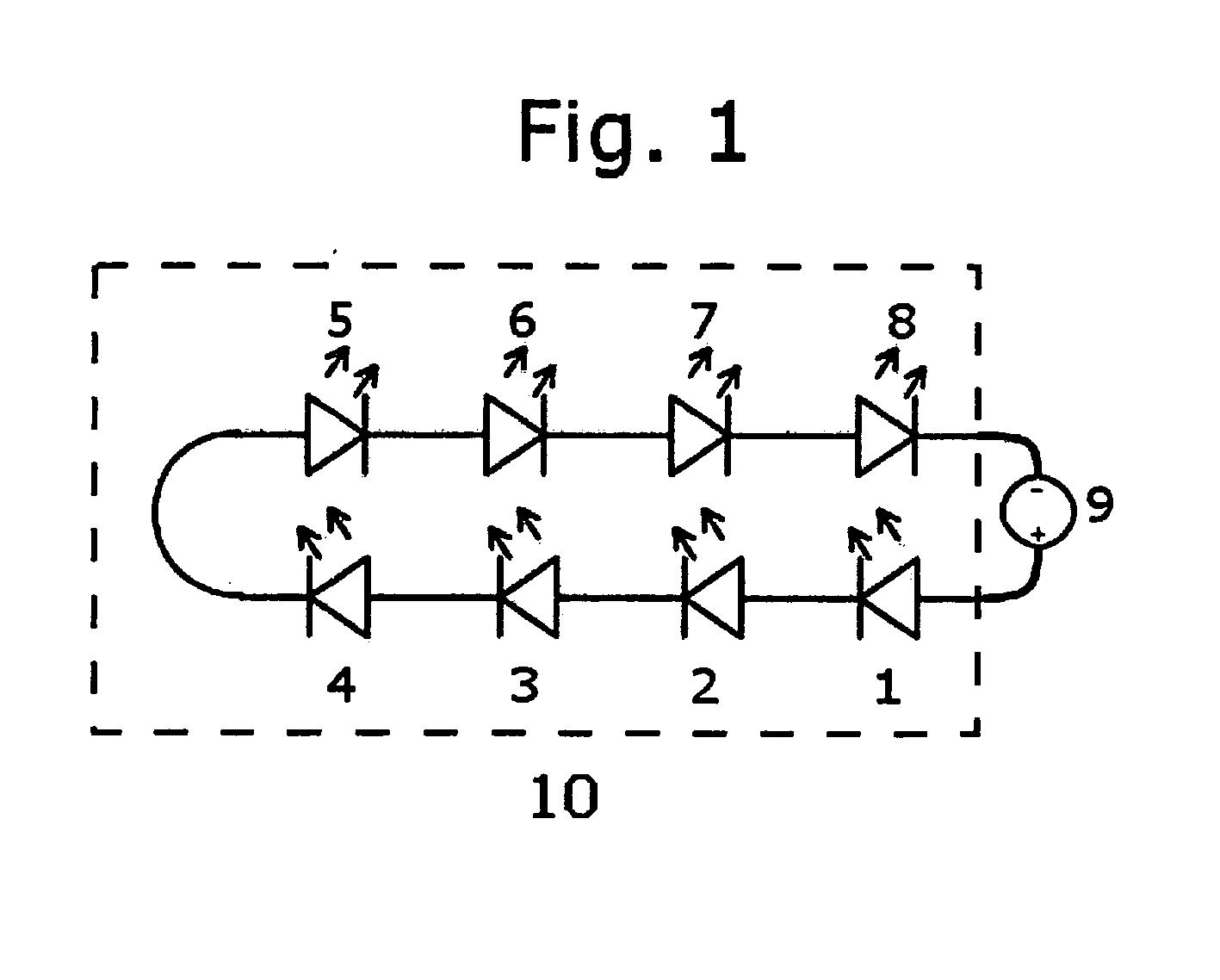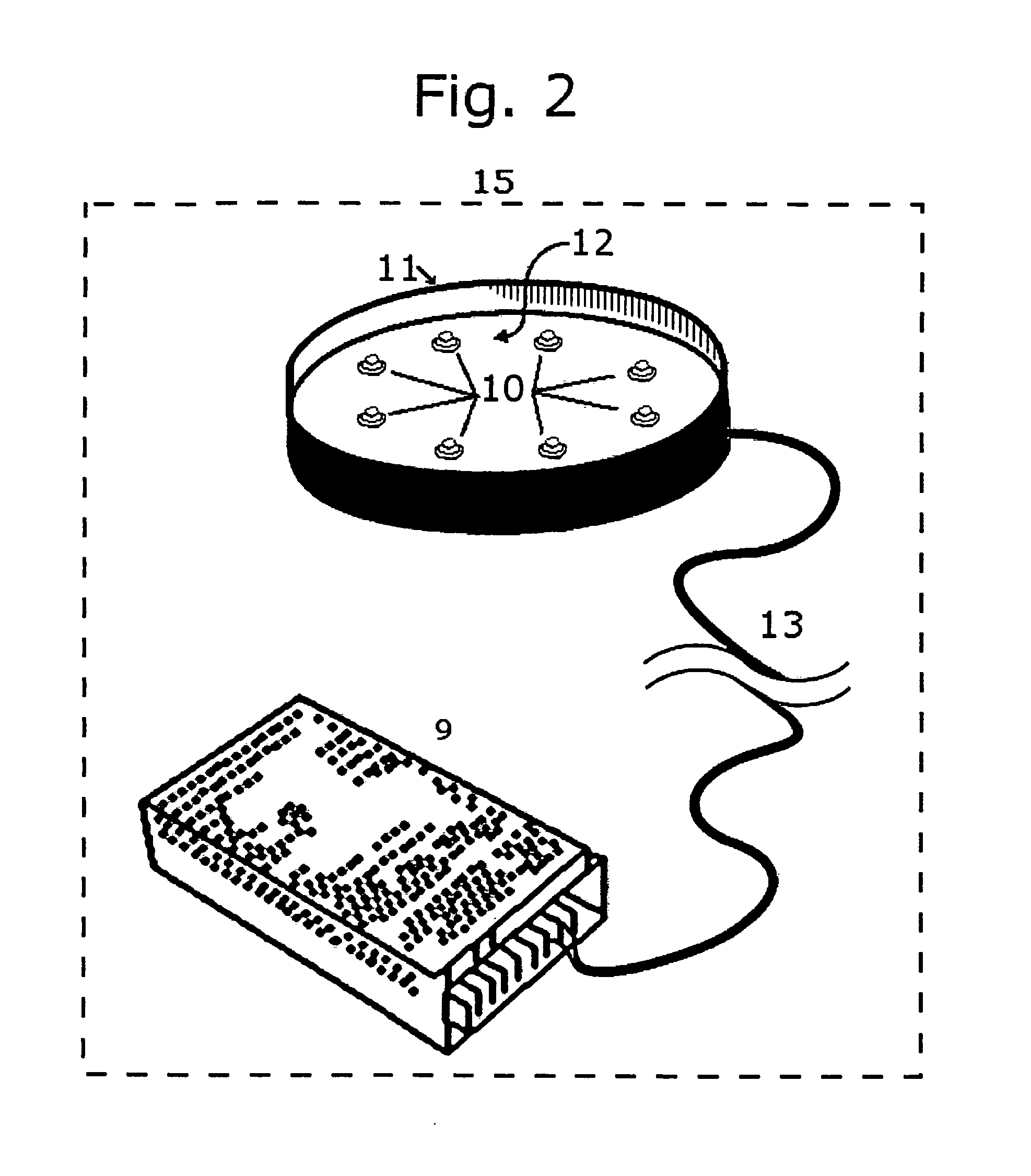Array of LED lights optimized to produce light at the peack absorbance frequencies of the primary molecules involved in photosynthesis and plant growth
a technology of peack absorbance frequency and led lights, which is applied in the direction of light source semiconductor devices, light source saving energy measures, lighting and heating apparatus, etc., can solve the problems of high energy consumption required to generate light, inefficiency in these approaches, and large amount of light spectrum produced by plants
- Summary
- Abstract
- Description
- Claims
- Application Information
AI Technical Summary
Benefits of technology
Problems solved by technology
Method used
Image
Examples
Embodiment Construction
[0020]An Assembly 15, 16 consisting of a Light Producing Array or Sub-array 10 as indicated in FIG. 1, a case 11, a clear protective cover 12, electrical conductors 13, and a power supply 9.
[0021]The array or sub-array 10 in FIG. 1 is composed of LEDs selected to potentiate specific molecules in a plants photosynthetic systems, and the associated electrical circuit hardware.
[0022]LED 1 is 430 nm targeting Chlorophyll A.
[0023]LED 2 is 664 nm targeting Chlorophyll A.
[0024]LED 3 is 460 nm targeting Chlorophyll B.
[0025]LED 4 is 647 nm targeting Chlorophyll B.
[0026]LED 5 is 450 nm targeting Beta-Carotene.
[0027]LED 6 is 480 nm targeting Beta-Carotene.
[0028]LED 7 is 680 nm targeting P680.
[0029]LED 8 is 700 nm targeting P700.
[0030]The Assemblies 15, 16 can be in a wide variety of configurations consisting of multiples of Array 10.
[0031]For larger arrays assemblies, the ratio of the constituent LEDs may be varied as long as all light frequencies identified above are generated.
[0032]FIG. 2 il...
PUM
 Login to View More
Login to View More Abstract
Description
Claims
Application Information
 Login to View More
Login to View More - R&D
- Intellectual Property
- Life Sciences
- Materials
- Tech Scout
- Unparalleled Data Quality
- Higher Quality Content
- 60% Fewer Hallucinations
Browse by: Latest US Patents, China's latest patents, Technical Efficacy Thesaurus, Application Domain, Technology Topic, Popular Technical Reports.
© 2025 PatSnap. All rights reserved.Legal|Privacy policy|Modern Slavery Act Transparency Statement|Sitemap|About US| Contact US: help@patsnap.com



